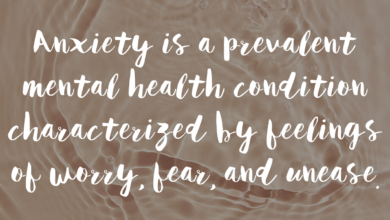7 Tips on Showing Up When a Loved One is Undergoing Gender Transition

Someone you love or care for very much has shared with you that they want to “transition”. What does it mean and what do you do now?
Gender transition is the process where someone changes their outward appearance and sometimes their body to match the gender they identify with. For example, if someone was assigned male at birth but identifies as a woman, their transition might involve changing their name, wearing different clothes, and possibly taking hormones or having surgery to align their physical appearance with their true gender.
Gender and anxiety, depression, and co-occurring disorders are connected issues that are thankfully receiving more research and exploration in the field of mental health.
With ADAA’s 2024 Annual Conference focusing on sex and gender, it is important for mental health experts to have access to more evidence based information on gender-related topics and how to how to support people on their identity journeys.
7 Tips For Showing Support
Supporting a loved one through their gender transition can be a journey of self-discovery, self-acceptance, and a redefining of relationships. There is guidance on how to navigate this path with self-compassion, empathy, and support.
1.Your Support Matters
Your support is invaluable to your gender diverse loved one. Research has shown that transgender individuals with supportive families experience better mental health and overall well-being. Even reading this blog is a demonstration of your willingness to understand and support your loved one. By doing so, you’re already making a significant difference in their life.
2. It’s Okay Not to Fully Understand
The belief that there are only two genders has been deeply ingrained in many societies and cultures, making it challenging to shift perspectives. Being different in terms of gender is sometimes seen as a problem, something to be ashamed of and even illegal in some places. Thinking flexibly may require you to challenge long held beliefs and reevaluate aspects of your life. Be patient, be open and be curious.
3. Find Common Ground
While you may not fully understand, remember that there’s a part of you that does. We all share the fundamental desire to be loved, seen, and appreciated for our authentic selves. This shared experience creates an opportunity for connection. Embrace the common ground of love and acceptance as a bridge to better understand your gender diverse loved one.
4. Ask What Support Looks Like
Support can manifest in various ways. Ask your loved one what support looks like to them. Everyone’s needs and preferences are unique, so engaging in open and honest conversation about their specific requirements is essential.
5. Acknowledge Feelings of Loss
Some feelings of loss and anxiety may emerge about your loved one’s transition. You may have strong attachments to their legal name, the way they looked or other aspects of their personality that feel tied to their gender assigned at birth. You may miss aspects of the person you once knew but remember that your loved one isn’t going anywhere. Acknowledge any feelings that may come up, including grief, while making space for the positive aspects of their transition.
6. Get Your Own Support
Seek out support groups, friends and trusted family members who can provide a safe space for you to express your emotions and share your experiences. Be mindful of significant changes to your mood, energy, appetite, and sleep patterns as well as anxiety that interferes with your daily routine. These may be signs of clinical depression or anxiety that can be navigated with support from a therapist, psychiatrist or other mental health provider. Remember that you don’t have to go on this journey alone.
7. The Journey
Watching your loved one become their most authentic self can be a beautiful experience, but it can also be disconcerting, confusing and sometimes challenging for the people who love them. You will witness them becoming more comfortable and confident individuals but it’s important to remember that transgender and non-binary communities still face significant stigma and discrimination which can be difficult for loved ones to witness. Being present and there for your loved one can make a difference.
Questions to Ask in Your Journey to Support Your Loved One
Questions are important, whether they are questions you ask yourself as the person supporting your loved one or questions you ask of others, including your loved one. Some important questions might be:
1) Who is one safe and supportive person in my life that I can talk to about my loved one’s transition?
2) What’s the best thing about my loved one’s decision to transition? How might it improve their life?
3) Have I said or done anything in the past that could have made my loved one feel unsupported, unsafe or offended? How can I make amends and be mindful about not repeating such behaviors in the future?
4) What’s one thing I can do today to communicate my desire to understand and support my loved one?
Signs of Anxiety and Distress in Your Loved One
Transgender individuals may experience heightened levels of distress and anxiety due to societal expectations, transphobia, and the challenges of the transition process. Signs of clinical depression and anxiety can include persistent feelings of sadness, changes in sleep patterns, loss of interest in activities, and heightened irritability.
- Persistent Sadness: Take notice if your loved one consistently expresses overwhelming feelings of sadness or emptiness that persist over an extended period.
- Changes in Sleep Patterns: Disruptions in sleep, such as difficulty falling asleep or excessive sleeping, can be indicative of mental health challenges.
- Loss of Interest: A decline in interest or pleasure in previously enjoyed activities may signal the presence of depression.
- Heightened Irritability: Increased irritability or anger that seems disproportionate to the situation can be a manifestation of underlying anxiety.
If you observe these signs persisting, encourage your loved one to seek professional help. Mental health professionals experienced in working with transgender individuals can provide targeted support.
Resources and Support Online
Remember, you don’t have to have all the answers. But there is information and support out there. ADAA has a great Find Your Therapist tool as well as personal stories. Resources for families of gender diverse people, such as articles, fact-sheets, workbooks, and support groups, are also available online:
Source link
#Tips #Showing #Loved #Undergoing #Gender #Transition

